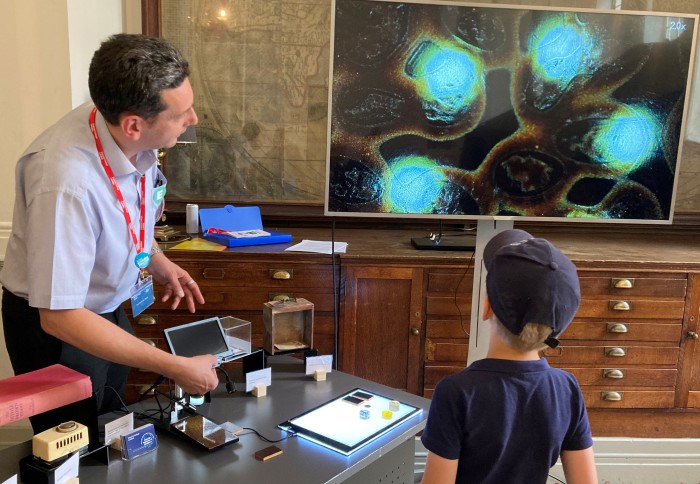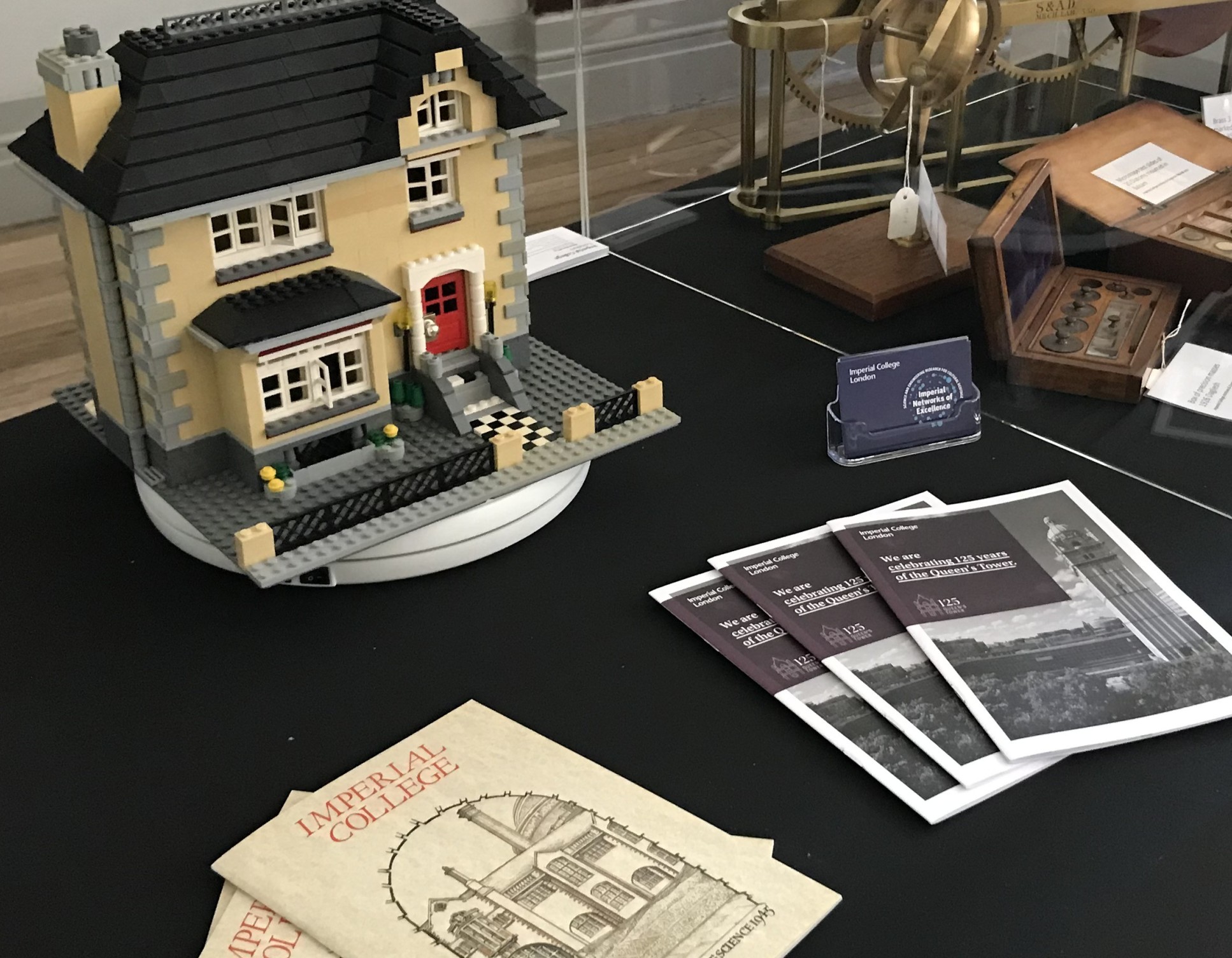Using modern technology to investigate ancient craft skills

Ambrose Taylor showing a young visitor what maki-e lacquer looks like close up
SERCH network members demonstrated microscopy techniques used in art conservation at the Great Exhibition Road Festival 2022.
Articles from everyday life deteriorate over time through exposure to light, heat, oxygen, and water. Understanding these processes is especially important so that art objects which are of great beauty and made with great skill, as well objects of historical or cultural significance, can be preserved for future generations.
At the Science and Engineering Research for Cultural Heritage (SERCH) Network exhibit at the Great Exhibition Road Festival in June 2022, visitors could use an optical microscope connected to a plasma screen to see degradation processes up close.
Children could spot the odd brick out on a Lego model of a house which had discoloured due to sunlight: one brick had been rotated so its pristine side was visible in the discoloured wall. Visitors to the Map Room of the Royal Geographical Society could also examine objects made of oriental lacquer with sprinkled gold decoration (maki-e), Play-Doh or paper.

Artificial vs natural ageing
The SERCH team showed how artificial ageing using carefully selected conditions (light, temperature and relative humidity) could be used to produce aged surfaces in weeks. These replicate the result of many years of natural ageing. This accelerated process enables researchers to test conservation treatments.
Imperial College Archives provided examples of historic instruments used for research and teaching at Imperial, demonstrating the skill of the technical staff and researchers, and illustrating the value of preserving heritage.
Cultural Heritage research at Imperial College London
SERCH is an Imperial College Network of Excellence connecting scientists and engineers with conservators and heritage professionals to find solutions to cultural heritage problems. It is supported by the Institute of Molecular Science and Engineering. The exhibit was organised by Dr Fabian Sorce with the assistance of Professor Ambrose Taylor, both of the Department of Mechanical Engineering.
SERCH is organising a joint workshop with the conservation science laboratory at the Victoria and Albert Museum in September 2022. The aim of the workshop is to connect Imperial researchers with cultural heritage scientists at the V&A, to set up research collaborations in conservation science.
Article text (excluding photos or graphics) © Imperial College London.
Photos and graphics subject to third party copyright used with permission or © Imperial College London.
Reporter
Dr Isabella von Holstein
Department of Computing